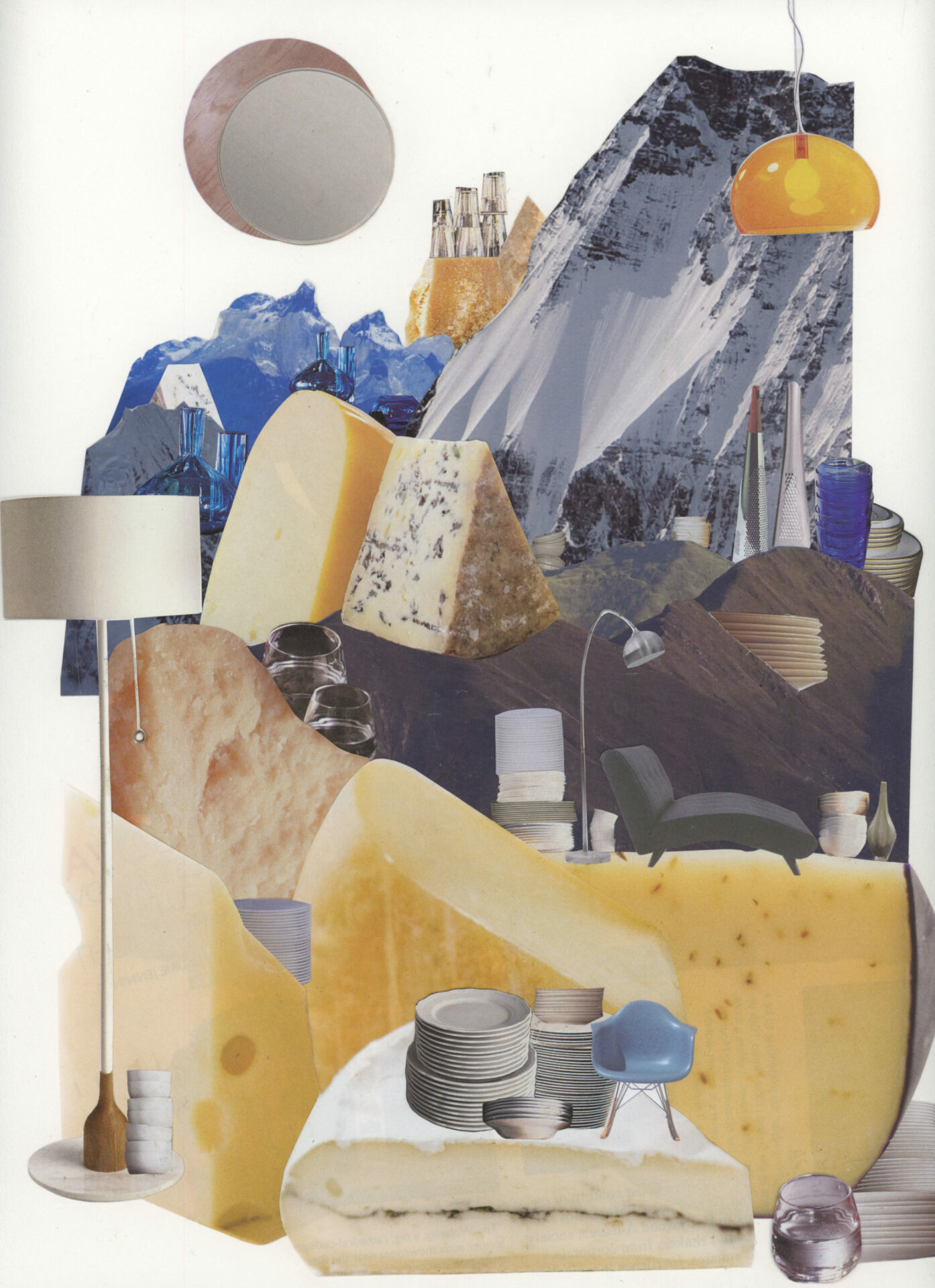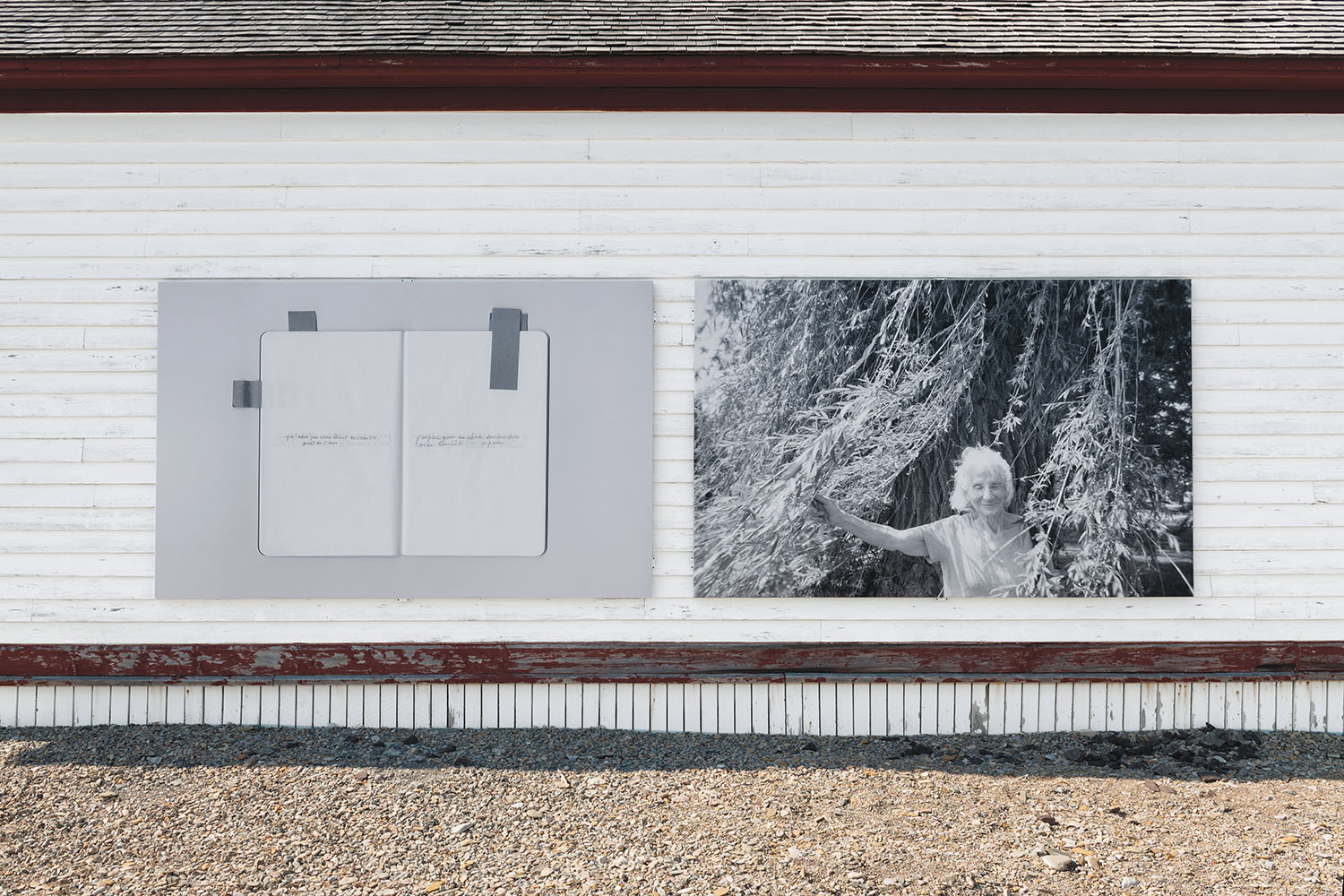
May 5–June 11, 2011
[En anglais] In an era in which photographers increasingly turn to forgotten historical moments for the content of their work (think of group exhibitions such as Re-enactments and Not Quite How I Remember It), it is refreshing to encounter two artists whose imagery calls on the past while still being firmly anchored in the present. In a recent two-person show at Angell Gallery, Alex Kisilevich and Geoffrey Pugen exhibited new works that played with mimicry, camouflage, and masquerade while self-reflexively addressing the possibilities of their chosen mediums.
In the front gallery, Kisilevich presented the results of his recent MFA thesis project: a series of seven large-scale, colour photographs depicting anonymous figures in awkward poses and makeshift disguises. Stick-Figure (2011), for example, features a figure loosely bound in armour made of thin tree branches. Identifiable as male only by the tufts of red facial hair that peek through his rustic outfit, the model is frustratingly faceless, yet his stance betrays a surprising sense of calm. Similarly, in Hair Head (2011), a young woman in a mustard dress is perfectly poised for a seated portrait, except for the thick mane of hair that obscures her entire face. In Mop (2010), another female figure is bent at the waist, a mop tucked under the back of her dress and covering her head in place of her hair. Through the manipulation of everyday props in these would-be portraits, Kisilevich creates disorienting views of human bodies that nevertheless unfold in vernacular spaces. Fake wood panelling and ornate linoleum floors appear throughout the series, suggesting a latent sense of the uncanny in these otherwise familiar settings.
While Kisilevich reinvents traditional portraiture with analogue interventions, Pugen’s work riffs on science fiction tropes using digital video and photography. The show opens with Rock Video (2011), a thirteen-minute close-up of a dark and shimmering mineral rock as it rotates in front of the camera lens, capturing and reflecting ambient light from the room. Borrowing the stylistic elements of cave scenes in nature documentaries and intergalactic vistas from science fiction movies, Pugen’s video recalls the cheesy special effect models of classic space films. By capturing the miniature landscape in high definition, the scene also hints at the all-too-real mimicry made possible through digital imaging. In a suite of photographs in the adjacent room, the reference to computer-generated images is made explicit through Pugen’s depiction of the blue and green screens used by weather forecasters and modern day special effects. In Blue Room (2011), a minimalist white hallway unexpectedly gives way to the cool, cyan glow of a blue screen, while in Green Screen (2011), a green square, normally used as the background for filming, takes centre stage, mounted on a gallery wall. In both, the behind-the-scenes materials of digital transformation become tangible and satisfyingly concrete.




